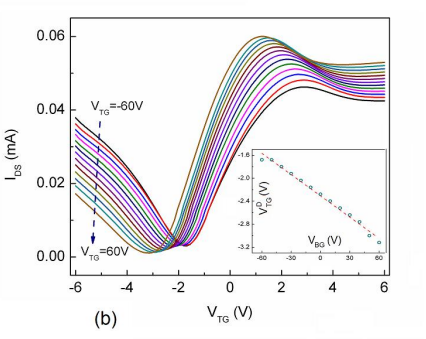Scientists have created a graphene transistor with a frequency of 427 GHz
 Unfortunately, unlike conventional semiconductors, which have a wide practical application, graphene, the material on which high hopes have recently been placed, does not have a forbidden zone, which means the complexity or total impossibility of building a new-generation transistor based on it. Guanxing Liu and his colleagues said that they found a workaround different from that used in conventional transistors.
Unfortunately, unlike conventional semiconductors, which have a wide practical application, graphene, the material on which high hopes have recently been placed, does not have a forbidden zone, which means the complexity or total impossibility of building a new-generation transistor based on it. Guanxing Liu and his colleagues said that they found a workaround different from that used in conventional transistors.Over the past five decades, the development of silicon electronics is largely due to the reduction of individual components on a chip. However, everything has its limits, and experts believe that this will last no further than 2026. Scientists around the world are actively looking for material that can replace silicon, and often look at graphene.
In semiconductors used in transistors, there is, as in any solid materials, a zone of energy in which electrons can flow freely, which makes them a conductor and "opens" them, and a zone in which their movement is impossible, which causes "closure" . A relatively small amount of energy is required to open and transfer to the conduction band. These properties determine the principles and characteristics of semiconductor transistors. However, the absence of a forbidden zone in graphene seriously limits its use as a transistor: graphene has no energy regions that an electron cannot possess in a crystal. In practice, this means the inability to "turn off" the graphene transistor.
Therefore, one of the main tasks facing the researchers of the properties of graphene was the creation of an artificial forbidden energy zone. They achieved this by applying electric fields, adding impurities or stretching and compressing the material. Attempts were not crowned with a positive result: the creation of a transistor requires a forbidden band of the order of a unit of eV under room temperature conditions, while attempts lead to the size of the forbidden band of only a few hundred meV. And even in this case, the graphene transistor had negative properties: too high power consumption and dissipated heat.
')
Liu and his colleagues approached from a completely different angle: instead of trying to create an artificial forbidden zone, which would have made the transistor more silicon-like, they used the phenomenon of negative resistance. The phenomenon is the appearance on the current-voltage characteristic of the area where the voltage decreases with increasing current flow. Various studies have shown that graphene has negative resistance under certain conditions.
Liu's group attempted to use this voltage drop to create logic elements. In fact, the main achievement was the demonstration of how using several graphene field-effect transistors it is possible to create traditional logic elements. The results were promising, Liu and his colleagues showed the effectiveness of their approach by creating a logical circuit that has advantages over a similar circuit made with silicon transistors. So far, the researchers have succeeded in creating an element of the exclusive "OR" based on three graphene transistors instead of eight silicon ones, which promises much less space on the chip. It is also interesting that graphene transistors can operate at a frequency of more than 400 GHz.
Of course, the frequency of the individual element does not mean the same frequency of the whole microprocessor. Also, the current transistor frequency record remains for a semi-terahertz silicon-germanium transistor , which operated at a frequency of 765 GHz at room frequency and at a frequency of 845 GHz at a temperature of -55 ° C, an indium phosphate and indium-gallium arsenide . If it comes to work speeds, then, as indicated by the enclis , with the help of laser radiation, the electric field in the dielectric can be switched with a frequency to petahertz, only a femtosecond . Nevertheless, the research of Guansung Liu and his colleagues is a new, different from the previous method of building logical circuits based on graphene.
Report on arXiv
Source: https://habr.com/ru/post/190892/
All Articles